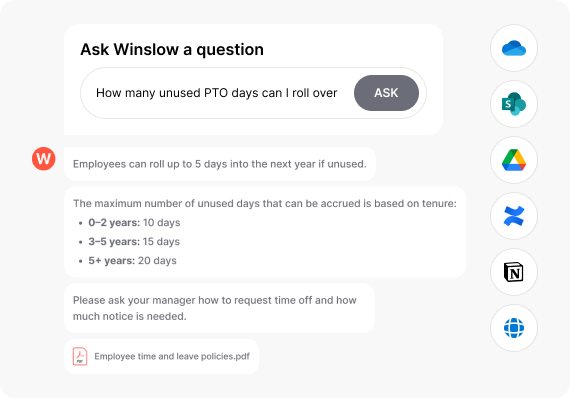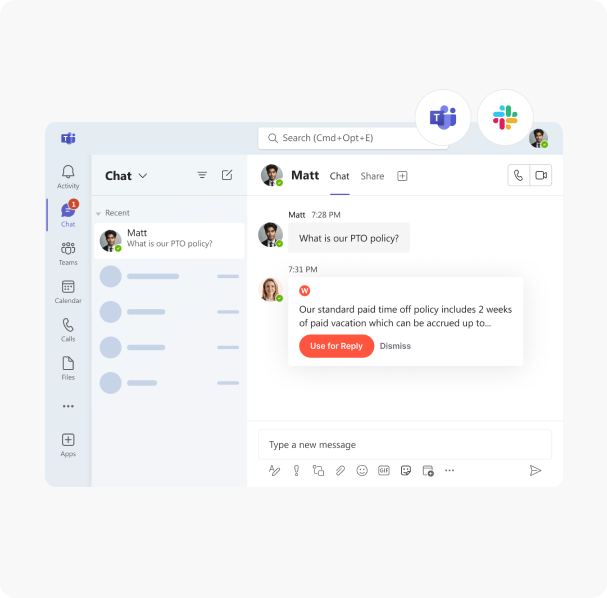HR Standard Operating Procedures (SOPs) form the backbone of a well-structured and efficient workplace. These detailed documents ensure consistency, compliance, and clarity in managing human resources. Whether you’re a small business or a large enterprise, having the right HR SOPs in place can transform how you handle employee-related processes. Here are ten essential HR SOPs every business should implement.
What are HR SOPs?

HR SOPs (Standard Operating Procedures) are documented processes and guidelines that outline the step-by-step methods for carrying out specific HR tasks and functions within an organization. These procedures ensure consistency, efficiency, and compliance with legal and organizational standards across various HR operations.
HR SOPs are essential for standardizing workflows, improving operational efficiency, reducing errors, and ensuring all employees and HR teams are aligned with company policies and best practices.
Related: Why Is Conversational HR the Future of Employee Interaction?
1. Recruitment and Hiring SOP
An SOP for recruitment streamlines the process of attracting, evaluating, and onboarding new talent. A structured hiring process ensures you attract top talent while maintaining consistency and compliance. This SOP should address:
- Job posting and advertising strategies.
- Screening and interviewing protocols.
- Background checks and reference verification.
- Offer letter issuance and negotiation guidelines.
A comprehensive recruitment SOP not only helps in finding the right talent but also ensures a fair and efficient process, enhancing the candidate experience and safeguarding your company’s reputation.
2. Employee Onboarding SOP
First impressions matter. An onboarding HR SOP helps new hires integrate seamlessly into your organization, setting the tone for their journey. This SOP should address:
- Welcome procedures and orientation schedule.
- Documentation and account setup.
- Assignment of mentors or onboarding buddies.
- Training and role-specific introductions.
A well-crafted onboarding SOP not only boosts retention but also accelerates productivity, helping new employees feel valued and prepared from day one.
3. Performance Evaluation SOP
Regular and fair performance evaluations are critical for employee development. This SOP should establish a consistent framework that fosters trust and accountability. It should address:
- Frequency and type of evaluations (e.g., annual, quarterly).
- Clear performance metrics and feedback methods.
- Documentation and record-keeping requirements.
- Guidance for addressing underperformance and rewarding achievements.
A detailed performance evaluation SOP ensures transparency and fairness, driving motivation and aligning individual goals with organizational objectives.
4. Compensation and Benefits SOP
Transparency in salary and benefits is key to employee satisfaction. This HR SOP ensures employees understand their entitlements and reduces payroll-related disputes. It should address:
- Payroll processes and timelines.
- Overtime and bonus policies.
- Health and wellness benefits enrollment.
- Procedures for salary adjustments and promotions.
By clearly outlining compensation processes, this SOP helps build trust and minimizes misunderstandings, fostering a supportive and equitable workplace.
5. Employee Conduct and Discipline SOP
Maintaining workplace harmony requires clear behavioral expectations. A well-defined conduct SOP ensures fairness and supports a positive work environment. This SOP should address:
- Code of conduct and disciplinary policies.
- Steps for addressing misconduct and issuing warnings.
- Appeal processes for disciplinary actions.
- Record-keeping protocols for incidents.
An effective conduct SOP promotes accountability and reinforces company values, creating a respectful and professional atmosphere.
6. Leave Management SOP
Tracking and managing employee leave is essential for smooth operations. Clear leave management SOPs prevent confusion and ensure compliance with labor laws. This HR SOP should address:
- Types of leave (e.g., vacation, sick, parental).
- Application and approval procedures.
- Leave tracking systems.
- Handling leave disputes and policy violations.
A robust leave management SOP ensures that employees understand their rights and responsibilities, while also helping managers plan workloads effectively.
7. Workplace Safety and Health SOP
Employee safety is a top priority. A robust safety SOP reduces risks and demonstrates your commitment to employee well-being. This SOP should address:
- Emergency response plans and drills.
- Reporting and addressing workplace hazards.
- Compliance with health and safety regulations.
- Guidelines for maintaining a safe work environment.
By fostering a culture of safety, this SOP not only protects employees but also ensures compliance with legal requirements, minimizing potential liabilities.
8. Grievance Handling SOP
Employees need a safe and confidential way to voice concerns. An effective grievance-handling HR SOP fosters trust and resolves conflicts efficiently. This SOP should address:
- Reporting channels for grievances.
- Steps for investigation and resolution.
- Protection against retaliation.
- Documentation and follow-up procedures.
A transparent grievance process empowers employees to speak up, building a culture of trust and inclusivity.
9. Training and Development SOP
Continuous learning drives employee engagement and productivity. A strong training SOP helps employees grow and keeps your team competitive. This SOP should address:
- Identifying training needs.
- Planning and scheduling training programs.
- Evaluating training effectiveness.
- Maintaining training records.
An effective training SOP ensures your workforce remains skilled and adaptable, giving your organization a competitive edge.
10. Exit and Offboarding SOP
A structured exit process ensures departing employees leave on good terms. A well-executed offboarding SOP protects your company and leaves a positive impression. This SOP should address:
- Resignation and termination procedures.
- Final settlement and return of company assets.
- Conducting exit interviews.
- Revoking access to company systems.
A thorough offboarding process helps gather valuable feedback, protects company assets, and ensures smooth transitions for both the employee and the organization.
The Best Way to Manage Policy-Related Questions: Let Your Employees Get Instant Answers
Employees are used to getting quick responses, often through chat or messaging platforms. It’s familiar, efficient, and easy for them. Chances are, your HR team is frequently interrupted with policy-related questions that could be answered faster and more efficiently. This is where Winslow steps in, allowing employees to chat directly with your HR policies rather than navigate through complex intranet or SharePoint sites. Powered by AI, Winslow understands and interprets your policies, providing instant answers as if it had memorized them all by heart.
1. Leaving Your Workflow Breaks Your Flow

Having to stop what you’re doing and dive into documents or search through an intranet can significantly disrupt productivity. With Winslow, you never have to leave Slack or any other communication platform to get the answers you need. Winslow integrates seamlessly, ensuring employees receive responses quickly and without interruption.
2. Having Up-To-Date Documents is Key

Ensuring your employees are accessing the most current version of your policies is critical. Winslow’s knowledge base is always up to date, reflecting any changes your HR team makes to your policies or procedures. This guarantees that employees always receive the most accurate and relevant information without delay.
3. Supercharge Winslow with Your HRIS Information

Winslow becomes even more powerful when integrated with your HRIS system. This integration unlocks several key features:
- Instant access to employee profiles within Winslow, Gmail, Teams, Slack, and Outlook, enabling personalized answers.
- When an employee asks a question, Winslow can tailor responses based on their location, department, seniority, or any other attribute from their employee profile, ensuring the correct documents are used.
- Employees can also ask personal questions regarding things like PTO or paystubs, with Winslow drawing from HRIS data to provide specific answers.
4. Identify Policy Gaps

Winslow’s AI doesn’t just answer questions—it also helps you identify gaps in your policies. If an employee asks a question that doesn’t have a clear or satisfactory answer, Winslow flags it, allowing your HR team to spot areas where policies need to be updated or created. This proactive approach ensures that your policies evolve alongside the needs of your workforce.
By streamlining how your employees access HR policy information, Winslow helps create a smoother, more efficient workflow, giving your HR team more time to focus on strategic priorities while ensuring employees have easy access to the information they need.
5. Employees Ask Questions in Email, Slack, and Teams

Every HR person gets contacted on multiple channels—email, Slack, Teams, in person, and even by text. Winslow is designed to work seamlessly across all of these environments, ensuring you never need to stop your workflow to answer a question. Whether an employee reaches out through email, Slack, or Teams, Winslow can respond instantly with the information they need, making HR communication effortless and efficient.
Save Time Answering Policy-Related Questions
Winslow helps HR teams provide instant, accurate responses to employee inquiries while saving up to 75% of their time.








